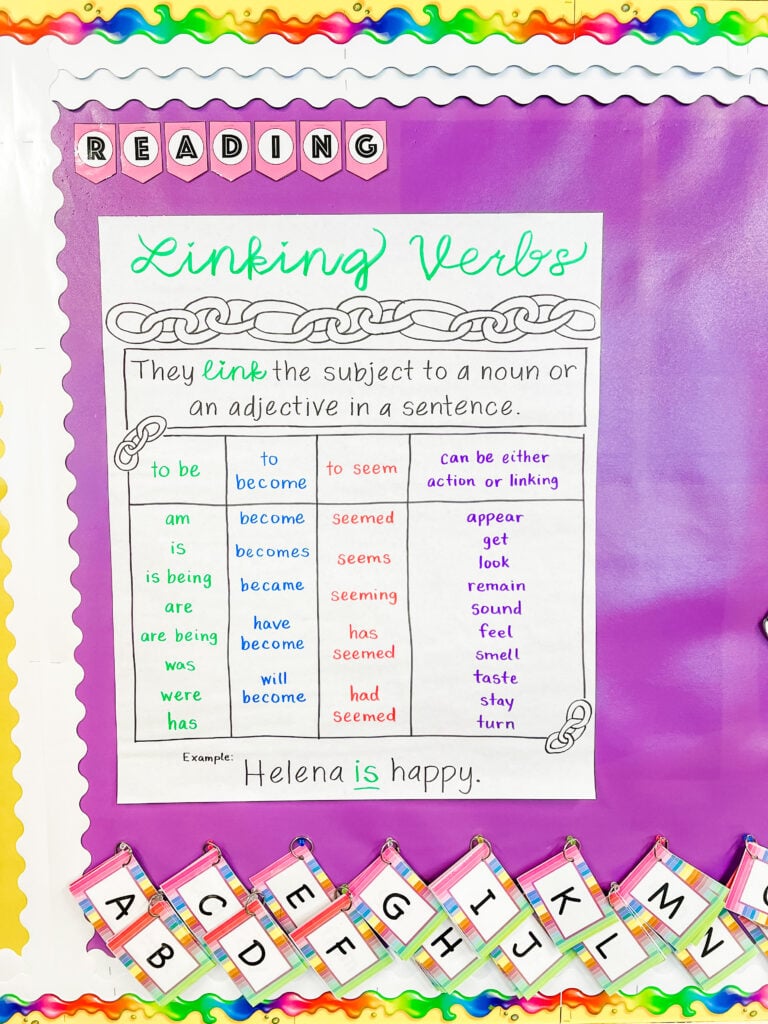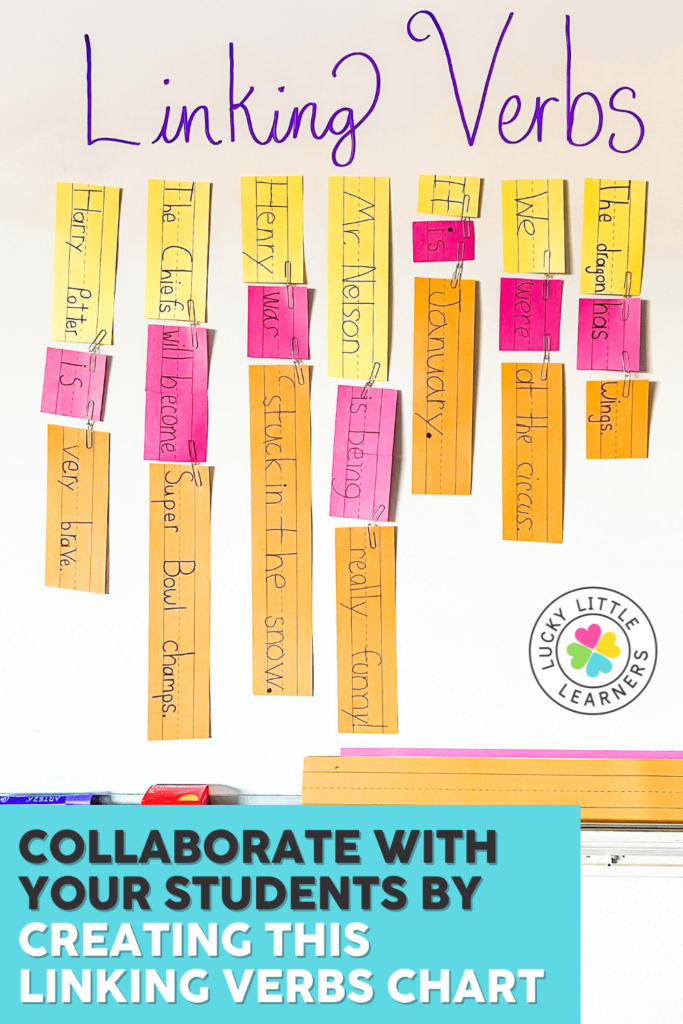When it comes to grammar, verbs are my absolute favorite to teach. There are so many ways to make them multi-sensory and fun. However, I am definitely guilty of spending more time on action verbs than the all too important linking verbs.

Enhance Literacy with Embedded Grammar Lessons
Research on the Science of Reading (SOR) dating back to the 1970s shows that teaching grammar as isolated rules doesn’t effectively transfer to writing and speaking. What works better is embedding grammar within the context of writing. This is why our writing program Lucky to Learn Writing (LTLW) includes grammar skills integrated into writing lessons. This approach ensures that the same skills and standards are met, but in a meaningful context that connects with the rest of the literacy curriculum.
Get this exclusively on All Access

Join All Access to download everything we've ever made.
We also recognize the value of targeted practice and intervention to reinforce these skills. That’s why we’ve compiled a list of our favorite grammar activities that provide additional practice and intervention opportunities. These activities are designed to complement our integrated approach, ensuring students have a well-rounded understanding of grammar concepts. Let’s dive into these engaging and effective activities!
What are Linking Verbs?
Here’s a quick rundown in case you need it by Mr. Miles. Trust me, this video is 3:11 well spent.
To recap:
- Action verbs tell a reader what the subject is doing
- Linking verbs connect subjects to an adjective or predicate
Examples of Linking Verbs
Examples of linking verbs, that are easy to identify, include:
- Basic forms of “to be” – am, is, are, was, were, has been, are being, might be
- Forms of “to become” – becomes, is becoming, became, will become
- Forms of “to seem” – seems, seeming, will seem, seemed
Examples of trickier linking verbs are verbs that can be either action or linking. Often, this includes words that are related to the five senses like: feel, look, smell, sound, and taste.

Teaching Linking Verbs to Students
Bu tjust how to teach linking verbs? First of all, I always introduce action verbs first. They are more concrete and easier for students to understand. While I’m teaching action verbs I introduce the basics of verbs. For the most part, all sentences have one and we go over what a subject and predicate are (if we haven’t previously covered that).
Once my students have a basic understanding of general verbs and action verbs I begin the linking words lesson plan by writing a simple sentence like, “Helena is happy” on the board. I ask my students to use what they know and find the verb in the sentence. After giving them time to think and come up with their own ideas we discuss the sentence and I introduce linking verbs. After this initial lesson I like to show this video. It’s quick and I’ve found that for those students that short videos work so well with some of my students.
Whole Class or Small Group Lesson
After the video it’s time for the whole class (or small group) lesson using the release of responsibility model.
I Do
Begin an anchor chart to complete with your students. Title it Linking Verbs and write down examples of linking verbs and the definition of a linking verb on the top half of the page. Below that write our example sentence, “Helena is happy.” Label each portion of the sentence and remember the importance of metacognition. Talk through your thinking out loud.

We Do
I project the Linking Verbs digital literacy center on the board. The students help me create sentences using subjects, linking verbs, and predicates. This is such a fun part of the lesson because I let the students get a little silly with their sentences as long as they are grammatically correct. “The little baby is writing a letter” always gets some giggles out of my students. I take sample sentences from this portion of the lesson and add them to the anchor chart. We briefly discuss and label each sentence as we add it to the anchor chart.
I like using centers as the “we do” portion of a lesson because afterwards it can immediately be added to the centers rotation. Students have had experience with it and can work on it independently. It helps minimize the “what do I do at this center??” chaos.

You Do
At this point, your students are more than likely reading for some independent linking verb activities. Use the anchor chart you and your students have been working on collaboratively to give them an opportunity to write their own sentences with linking verbs. Before the lesson, cut construction paper into strips or have your students do it on their own. Use two different colors. Give every student two strips of one color and one strip of a second color. Using the examples of linking verbs on the chart, ask students to build their own sentences to attach to the anchor chart. Check out the photo below to see what I mean.

Students will put a subject on one piece of paper, a predicate on the other, and the lone strip of a different color will be for their linking verb.
The Grammar Day by Day packet comes in handy for this portion of the lesson as an exit ticket. I print out the week of daily practice (conveniently prints onto one double-sided page) and use this as independent work. Day 1 is perfect because students are simply asked to provide examples of linking verbs which is an easy way to reinforce using anchor charts as reference materials. A skill that needs a lot of reinforcement in 2nd grade. Every day, after a mini lesson my students complete that day’s Grammar Day by Day entry to check for understanding.

More Resources for Linking Verbs
If you need some more resources for your linking verbs lessons, take a look at some of the links below.
- Spelling City has a few linking verb word lists at the bottom of this definition page for reference
- Another great Youtube video for students
- A Khan Academy lesson for linking verbs
How to Teach Other 2nd Grade Grammar Skills:
Is it time for a new concept in grammar? We have a post for that!
Linking Verbs ~ You are here!
Irregular Plural Nouns & Irregular Verbs
Shades of Meaning-Verbs & Adjectives





Keep up the good work
https://aab-edu.net/